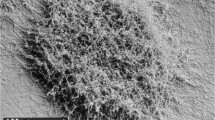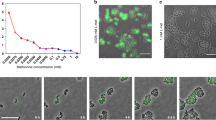Abstract
The Multiple Alleles at the MZ Locus. The fermentation of melezitose1 by Saccharomyces is controlled by a gene which generates a single enzyme capable of hydrolysing the five α-glucosides, namely, turanose, maltose, sucrose, α-methyl-glucoside and melezitose2. The gene exists in a series of multiple alleles which differ from wild-type by the loss of capacity to react adaptively to one or more of the five α-glucosidic inductors3,4. Only seven (of 32 theoretically possible) alleles are known: TMSGZ, TMSG-, TMS-Z, TMS- -, TM- - -, T- - - - and - - - - -. (Possibly only six real alleles of MZ exist; the putative TMS-Z allele may be a double mutant—TMSGZtogether with a gene generating a represser of G.) Each of the capital letters indicates ability to respond adaptively to the inductor indicated. Each of the mutant genotypes is stable on vegetative transfer and retains its characteristics without recombination in hybrids, thus establishing each mutant as a genuine allele5. The adaptive enzyme generated by MZ by exposure to each of the different substrates is identical irrespective of the allele or the inductor; the negatives fail to respond adaptively to the inductors indicated. Cell-free preparations and whole living cells, in which the enzyme has been induced, split all five substrates at characteristically similar rates6, indicating that permeability is not a factor in differentiating the different phenotypes; it has been inferred that the enzyme appears quickly after induction in the nucleoprotein layer7.
This is a preview of subscription content, access via your institution
Access options
Subscribe to this journal
Receive 51 print issues and online access
$199.00 per year
only $3.90 per issue
Buy this article
- Purchase on Springer Link
- Instant access to full article PDF
Prices may be subject to local taxes which are calculated during checkout
Similar content being viewed by others
References
Lindegren, C. C., and Lindegren, G., Genetica, 26, 430 (1953).
Palleroni, N. J., and Lindegren, C. C., J. Bacteriol., 65, 122 (1953).
Lindegren, C. C., and Pittman, D. D., Nature, 182, 271 (1958).
Lindegren, C. C., and Pittman, D., Genetica, 30, 169 (1959).
Lindegren, C. C., Pittman, D. D., and Ranganathan, B., Proc. Intern. Genetics Symp., 42 (1957).
Ouchi, S., and Lindegren, C. C., Canad. J. Genet. Cytol. (in the press).
Lindegren, C. C., Nature, 198, 1325 (1963).
Lindegren, C. C., Experientia, 9, 75 (1953).
Lindegren, C. C., J. Theor. Genetics (in the press).
Hestrin, S., and Lindegren, C. C., Arch. Biochem. Biophys., 38, 317 (1952).
Lindegren, C. C., and Lindegren, G., Proc. U.S. Nat. Acad. Sci., 35. 23 (1949).
Hestrin, S., and Lindegren, C. C., Nature, 168, 913 (1951).
Hestrin, S., and Lindegren, C. C., Arch. Biochem., 29, 315 (1950).
Jacob, F., and Monod, J., Cold Spring Harbor Symp. Quant. Biol., 26, 193 (1961).
Sutton, D. D., and Lampen, J. O., Biochim. Biophys. Acta, 56, 303 (1962).
Park, S. S. (unpublished results).
Ouchi, S., and Lindegren, C. C. (in preparation).
Author information
Authors and Affiliations
Rights and permissions
About this article
Cite this article
LINDEGREN, C. Repressers, Cryptic Enzymes and Structural Genes. Nature 199, 720–721 (1963). https://doi.org/10.1038/199720a0
Issue Date:
DOI: https://doi.org/10.1038/199720a0
This article is cited by
Comments
By submitting a comment you agree to abide by our Terms and Community Guidelines. If you find something abusive or that does not comply with our terms or guidelines please flag it as inappropriate.



